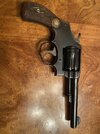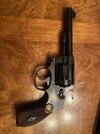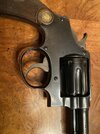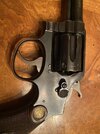I have Hunter’s Supply 148 grain 38 cal wadcutter bullets. It seems that threads on the internet suggest loading with 2.5 to 2.7 grains Bullseye. So, I check to see if a similar load exists in Lyman 49th edition. The closest bullet is a 150 grain #358091 bullet, but the suggested starting grains are considerably higher at 3.1, velocity of 837 fps, pressure 13,100 C.U.P.; MAXIMUM load 3.5 grains Bullseye, 942 fps, 16,000 C.U.P. I’m concerned because the starting grains as published in Lyman 49 are over 20% greater for a similar bullet than what folks are using on the internet.
Also, the overall length of the .38 Special case is 1.155”, and Lyman 49 (this being on page 354) states for the #358091 bullet load to have an OAL of 1.317”. The difference between 1.155” and 1.317” is 0.162”, meaning the wadcutter should stick out 0.162”. Which is a complete WAGas to where this came from as suggestions are over the place as to how deep to seat the wadcutter, anywhere from flush to as far out as is practical considering the revolver and will it function.
I’m loading for a 1919 production M & P Model of 1905 4th Change revolver.
A photograph of the bullet I’m using is provided.
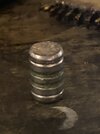
Also, the overall length of the .38 Special case is 1.155”, and Lyman 49 (this being on page 354) states for the #358091 bullet load to have an OAL of 1.317”. The difference between 1.155” and 1.317” is 0.162”, meaning the wadcutter should stick out 0.162”. Which is a complete WAGas to where this came from as suggestions are over the place as to how deep to seat the wadcutter, anywhere from flush to as far out as is practical considering the revolver and will it function.
I’m loading for a 1919 production M & P Model of 1905 4th Change revolver.
A photograph of the bullet I’m using is provided.







